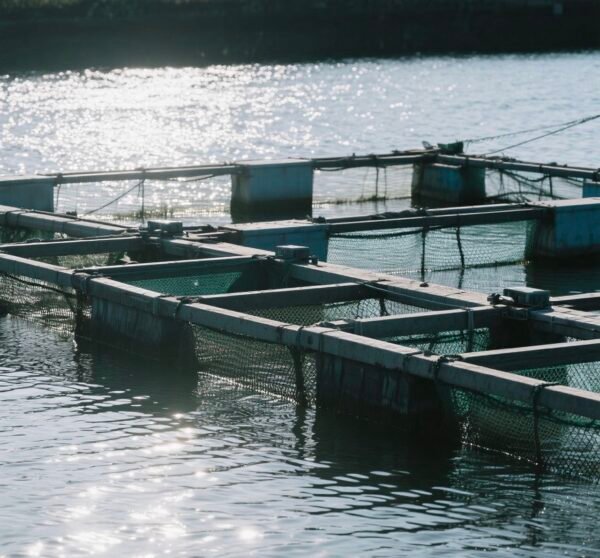The Hidden Challenge in Aquaculture
Aquaculture has rapidly become a cornerstone of global food security, supplying nearly half of all seafood consumed worldwide. From large-scale coastal farms to inland recirculating aquaculture systems (RAS), the industry’s growth faces a silent but pervasive threat:
Biofouling and microbial contamination on equipment surfaces.
Why Is This a Problem?
In water-rich environments, bacteria, algae, and fungi thrive on tanks, nets, pipes, and aeration systems. Over time, these microbial colonies form biofilms that:
- Harbor pathogenic bacteria harmful to fish and shrimp
- Reduce water quality by consuming oxygen and releasing toxins
- Increase equipment maintenance frequency and operational costs
Conventional cleaning with high-pressure water, chemicals, or manual scrubbing is labor-intensive and often insufficient to fully remove microbial layers, which quickly re-establish themselves.
Case Study: Silver-Based Antimicrobial Integration in Recirculating Systems
Background
A mid-sized tilapia RAS facility in Southeast Asia faced persistent bacterial infections, including Aeromonas hydrophila, leading to:
- Up to 15% mortality in certain grow-out tanks
- Increased antibiotic use, raising cost and consumer concerns
- Frequent biofilm removal operations, disrupting production schedules
Intervention
In 2023, the farm partnered with a materials engineering company to pilot silver-based antimicrobial agents integrated into their PVC piping systems and tank linings.
How it worked:
- Silver ions embedded within the polymer matrix were released gradually upon microbial contact.
- This disrupted bacterial cell membranes and inhibited biofilm formation without leaching harmful levels of silver into water.
Outcomes (6 months)
✅ Mortality reduction: Fish deaths due to bacterial infections decreased by over 70%, from 15% to below 4%.
✅ Biofilm control: Cleaning frequency reduced from weekly to monthly maintenance, saving significant labor costs.
✅ Antibiotic use: Nearly eliminated for bacterial disease prevention, addressing growing regulatory and market pressures.
Beyond Silver: Other Effective Antimicrobial Agents
While silver remains the most potent broad-spectrum antimicrobial, copper and zinc-based agents also play vital roles in aquaculture equipment.
Copper: Nature’s Aquatic Shield
Copper-based additives in netting and cage materials inhibit algae and bacterial biofilms effectively. In marine aquaculture, copper alloys are widely used for their natural antifouling properties, reducing net replacement costs and fish disease risk.
Zinc: A Supportive Role
Zinc compounds provide mild antimicrobial action while being environmentally safe within regulated limits. When combined with silver or copper, zinc can create synergistic formulations enhancing overall efficacy.
Human and Environmental Safety
Critically, the antimicrobial agents used in aquaculture equipment must:
- Comply with environmental discharge regulations
Metal ions should remain bound within equipment materials, avoiding harmful buildup in water systems. - Ensure food safety
No residual accumulation in fish tissues, preserving consumer confidence and export compliance. - Provide long-lasting efficacy
Embedded agents resist wear and remain active despite cleaning or water flow abrasion.
Industry Adoption Trends
1. RAS Systems
Closed-loop systems demand strict biosecurity. Integrating antimicrobial agents reduces dependence on chemical disinfectants, aligns with sustainability goals, and improves water quality management.
2. Net Pen Farming
Copper alloy nets or polymer nets infused with copper/zinc reduce fouling, improve oxygen flow, and maintain fish health without frequent net changes or antifouling coatings.
3. Feed and Water Pipes
Biofilm formation in feed delivery or aeration lines can contaminate feed and reduce dissolved oxygen. Antimicrobial-infused pipes maintain clean internal surfaces, improving operational efficiency.
Future Outlook
As the global aquaculture sector continues to expand to meet food security needs, demand for safe, effective, and environmentally responsible antimicrobial solutions will rise.
Manufacturers are exploring:
- Nanotechnology-enhanced metal agents
Maximizing antimicrobial surface area while minimizing additive volume. - Multi-metal synergistic formulations
Combining silver, copper, and zinc for broad-spectrum, long-lasting effects. - Bio-based antimicrobial alternatives
Integrating plant-derived compounds alongside metals to expand sustainability credentials.
Final Thoughts
Healthy fish populations start with clean environments. Antimicrobial agents embedded into aquaculture equipment create a protective barrier against harmful microbes, enhancing animal welfare, operational efficiency, and product safety.
Cleaner systems, healthier harvests, and greater peace of mind for producers and consumers alike.
✉️ Partner With Us
We provide tailored antimicrobial solutions – including silver, copper, and zinc-based agents – for aquaculture equipment manufacturers. Contact us to explore how our additives can protect your systems and boost your production outcomes.


-300x210.jpg)
